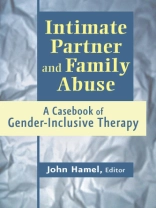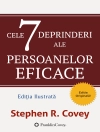‘The collected case examples are noteworthy in their diversity of presenting issue, treatment format, and outcome. As a whole, they underline our continued need to conduct assessments with clients prior to initiating treatment, to direct treatment toward identified client-related problems (in essence, meeting clients where they are), and to collect data that speaks to the effectiveness of our interventions in many settings and with many types of clients.’
– Jennifer Langhinrichsen-Rohling, Ph D, Professor of Psychology, University of South Alabama
- Shows how to successfully conduct family interventions using case studies
- Includes male-perpetrated, female-perpetrated, and mutual violence scenarios
- Presents a variety of theoretical orientations
- Includes discussion questions after each case study
This casebook showcases a wide variety of couples and families whose domestic violence cases vary in their composition, ethnic and socioeconomic status, and mental health issues. The case authors outline different therapeutic approaches for each case, including cognitive-behavioral, family systems, feminist, problem-solving, and many others. Each account includes a thorough description of the assessment procedure, treatment goals and reasons for selecting a particular approach and an account of the course of treatment. The book is primarily intended for mental health professionals and graduate students in the fields of family therapy, counseling, and family violence; but will also be of value to anyone in the field of family violence and those concerned with domestic violence public policy, prevention, and intervention.
Table des matières
‘
Contributors
Foreword
Introduction
PART I: INTRODUCTION
PART II: WORK WITH INDIVIDUALS AND COUPLES
PART III: WORK WITH FAMILIES
PART IV: MULTICULTURAL ASPECTS IN PARTNER VIOLENCE
PART V: SUPERVISION IN DOMESTIC VIOLENCE CASEWORK
Index’












